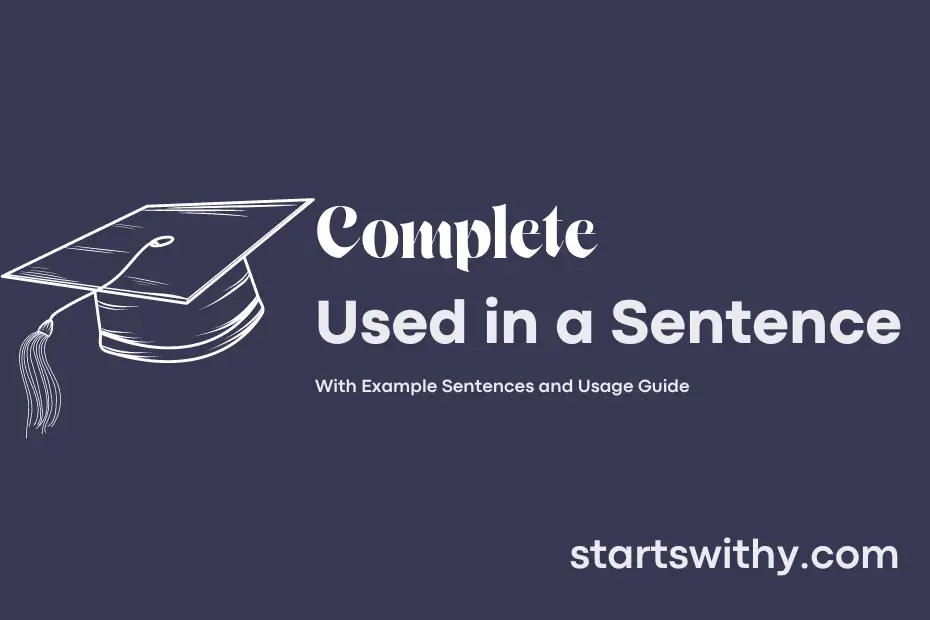Have you ever wondered how to use the word “complete” in a sentence? When we talk about something being “complete,” we are indicating that it is finished or whole, with nothing missing.
In English grammar, the word “complete” is often used to describe actions or processes that have been done entirely or objects that are whole and fully assembled. Let’s explore some examples to understand how this versatile word can be applied in various contexts.
7 Examples Of Complete Used In a Sentence For Kids
- We need to complete our drawings.
- Let’s complete the puzzle together.
- The teacher asked us to complete our homework.
- Can you complete the pattern?
- It’s important to complete our tasks on time.
- We will complete our game before lunchtime.
- Remember to complete your classwork before leaving.
14 Sentences with Complete Examples
- Complete the assignment before the deadline to avoid any penalties.
- Make sure to complete all the reading materials before the exam.
- It’s important to complete the registration process for your courses on time.
- Complete the online feedback form to share your opinions about the course.
- Remember to complete the internship report and submit it to your supervisor.
- Ensure that you complete the project proposal and get it approved by your professor.
- The students were asked to complete a survey about their college experience.
- You need to complete the online quiz by the end of the week.
- It is crucial to complete your financial aid paperwork to receive assistance.
- Make sure to complete your internship hours to fulfill the requirements.
- The professor reminded the students to complete the peer review process for their essays.
- He wrote a complete analysis of the research findings in his thesis.
- She presented a complete breakdown of the budget for the upcoming college event.
- Students were requested to complete a self-assessment of their skills and strengths.
How To Use Complete in Sentences?
Complete can be used in a sentence as an adjective or a verb to indicate when something is finished, whole, or entire. Here are some examples on how to use it correctly:
- Adjective: “She submitted her complete application before the deadline.”
- Verb: “Please make sure to complete all the tasks on your to-do list.”
When using Complete as a verb, make sure to pair it with an action word to indicate what is being finished or achieved. For example, “She will complete her project by the end of the week.” In this sentence, the word “project” specifies what is being finalized.
It is important to pay attention to the context of the sentence to ensure that Complete is used correctly. For instance, “The team will complete the puzzle together” indicates that the team will finish putting the puzzle pieces together. On the other hand, “The student completed the exam successfully” shows that the student finished the exam with success.
In summary, Complete is a versatile word that can be both an adjective and a verb, so it is vital to understand its usage in a sentence. By practicing using it correctly in various contexts, beginners can improve their language skills and effectively communicate their ideas.
Conclusion
In conclusion, sentences with complete structures are essential for effective communication. Clear and concise sentences provide better understanding of the intended message, reducing the risk of confusion or misinterpretation. With complete sentences, ideas are organized logically, making it easier for readers to grasp the meaning and flow of the information presented.
Furthermore, complete sentences enhance the overall quality of writing, demonstrating a level of professionalism and competence. By ensuring that each sentence has a subject, verb, and expresses a complete thought, writers can convey their ideas more powerfully and persuasively. Overall, mastering the skill of constructing complete sentences is crucial in becoming a proficient communicator and writer.



